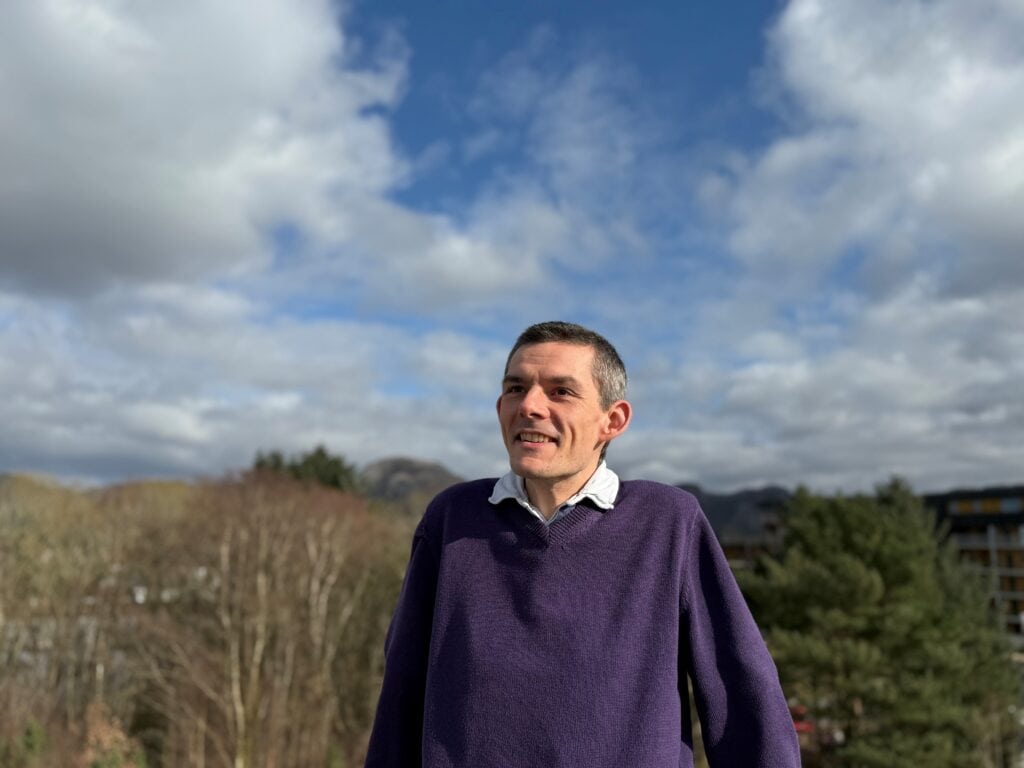Documents, tips, and tricks
Knowledge Base
Whether you're seeking answers to complex questions, or simply after one of our documents, you'll find it here.
Documents
Patents
Designs
Explore our Knowledge Base
Designs
Design symbol
This information can help prevent infringement of products protected by designs and also add to value to the protection itself.
When should you apply for design registration?
Therefore, one should wait to seek protection until the design is fully developed.
How long does it take to obtain a design registration?
If the application is granted, the registration is published in the Norwegian Design Gazette, and a registration certificate is issued.
Please note that the registration certificate will not be issued until the design has been made public. If you have requested a deferred publication in your application, the Norwegian Industrial Property Office will wait to issue the registration certificate until the design can be published.
What are the requirements for obtaining a design registration?
To achieve design protection, the design must be new and have individual character. "New" means that no identical design has been made publicly available in the EEA (European Economic Area) before the date the application was submitted (the filing date) or before the priority date if priority has been claimed. Please note the exceptions outlined in the "grace period" section.
"Individual character" means that the overall impression the design gives to an informed user must differ from the overall impression that such a user would get from another design that has been made publicly available.
When the Norwegian Industrial Property Office processes a design application, they must ensure that specific formal requirements set out by the design law are met. However, the examination of whether the design is new or has individual character is not i disse formalitetskravene. Dersom søkeren spesielt anmoder om det, skal Patentstyret, mot innbetaling av et tilleggsgebyr, undersøke om det finnes identisk design som er eller har vært registrert i det norske designregisteret.
How long does a design registration last?
A design registration can be renewed every five years up to four times, giving a maximum protection period of 25 years. An exception applies to spare parts, where the maximum protection period is five years.
We'll let you know when it's time to renew the design registration.
What is a grace period?
This arrangement is called the "grace period" and applies to Norway and several other countries in Europe and North America. In this context, it is important that the date on which the design was made public — for example, at an exhibition, in a journal, through a sale, or in any other way — can be documented.
The application for design protection must be submitted to the Norwegian Industrial Property Office within twelve months from the date the design was made public. Note: The grace period should only be used if the design is to be marketed and protected in countries with national legislation that includes provisions for a grace period. The EU and the USA, among others, have such provisions.
What is "priority"?
In such cases, the novelty requirement is also met in countries that apply an absolute novelty standard, provided the design was not publicly available when the application was submitted in Norway.
Get in touch, and we’ll help you with your international applications.
What to do if you believe a design registration is invalid?
Such a request should be submitted to the Norwegian Industrial Property Office along with a justification. The design registration may be revoked by the Norwegian Industrial Property Office if, upon review, it is found that the registration does not meet the requirements of novelty and individual character. An administrative review can be conducted at any time during the registration period.
Please contact us if you would like our assistance in submitting such a request or if you would like our assessment.
How can I stop counterfeit goods from entering Norway?
A design registration makes it easier to obtain assistance from customs authorities to stop the import of counterfeit goods.
If you suspect that illegal copies of your products are being imported, we can assist you in preparing an application to the customs authorities. A well-crafted application will increase the likelihood of customs stopping counterfeit goods at the border.
Contact us for help in protecting your design.
Trademarks
Requirements for registering a trademark
Descriptive Marks
Trademarks that are to be registered must not directly and specifically describe the goods or services they are meant to represent. Descriptive text or figures will not be perceived as a unique identifier, as others may need to use the same or similar words and images in marketing their goods and services. Descriptive trademarks lack the distinctiveness required by trademark law.
Example 1: It is possible to register the trademark APPLE® for computers but not for fruit, as "apple" is the English word for the fruit and would simply describe it.
Example 2: It is not possible to register the trademark STAVANGER CAR CARE for car wash services, as it merely indicates the location (Stavanger) and the type of service (car care). However, if you add a logo that does more than just describe the car wash service and is distinctive, you may be able to secure exclusive rights to the mark as a combined mark.
Confusingly similar trademarks
It is not possible to register a trademark that may be confused with already registered trademarks, unless consent is obtained from the existing trademark holder.
The Norwegian Industrial Property Office will always assess a new application against the existing applications and registrations in the Norwegian trademark register. If there is a risk that potential buyers of the goods or services may confuse the trademarks or assume a connection between the owner of the new trademark and the older one, the application will be refused.
Example: It is not possible to register B-TIME if someone has already registered BTIME for the same goods and services.
Other grounds for refusal
While lack of distinctiveness and confusingly similar trademarks are the most common reasons for refusal, there are other grounds for rejection as well. For example, a trademark must not be misleading regarding its geographic origin, and it must not be offensive. Additionally, it is not permitted to register the Norwegian national flag as a trademark without the consent of the state, although you may still use the flag in marketing your goods and services.
If you need help assessing whether your trademark is registrable, please contact us for a non-binding evaluation.
Which trademarks can be registered?
Word marks, figurative marks, and combined marks are the most commonly used and registered trademarks. However, it is also possible to register many other types of trademarks, such as motion marks, color marks, holograms, sound marks, multimedia marks, patterns, position marks, and three-dimensional marks.
Word mark
A word mark is a trademark consisting of letters and/or numbers and may be an abbreviation, a single word or name, a slogan, or a sentence, such as JUST DO IT®. The word mark may be a fanciful term, or it may use familiar words that have no special meaning concerning the goods or services for which it is used, such as M44®, KVADRAT®, APPLE®, or KIWI®.
Figurative and combined marks
Figurative marks are trademarks that consist of graphics (pure figurative marks) or a combination of words and graphics (combined marks). Figurative marks can be in black and white or color. While word marks and figurative marks are the most common types of trademarks, it is possible to obtain exclusive rights to other types of marks, especially three-dimensional marks, sound marks, and position marks.
Collective, guarantee, certification, and responsibility marks
Collective marks are trademarks registered in the trademark register and intended for use by, for example, an association or a group of producers. Collective marks can also be suitable for public entities.
Guarantee marks and certification marks indicate that a good or service complies with specific requirements, such as quality, production method, or material.
Responsibility marks are used by importers and producers of gold, silver, and platinum items to identify the product's origin and must be used in addition to a fineness mark.
An application for the registration of collective marks, guarantee marks, and certification marks must include rules for the use of the mark.
Other marks
In addition to words, shapes, and combinations of these, a range of other types of marks can be registered as long as they meet the trademark authorities' requirements for distinctiveness. Examples of such marks include motion marks, color marks (pure colors or combinations), hologram marks, sound marks, multimedia marks, pattern marks (repeating patterns), position marks (protecting a mark on a specific area of a product), and three-dimensional marks.
List of goods and services
The goods and services in the application are organised according to an international classification system called the "Nice Classification." When a trademark is registered, you gain exclusive rights to use the mark for the selected goods and services. This exclusivity also provides protection for the mark concerning goods and services that are considered similar to those for which your mark is registered.
The list of goods and services cannot be expanded after the application has been submitted. Therefore, it is important to submit an application with a list of goods and services that meets your current needs and those for the years ahead.
We can assist you in preparing a list of goods and services tailored to your needs.
Preliminary search
A preliminary search is a strategic tool that provides a quick and confidential assessment of potential obstacles to the registration of your trademark.
A preliminary search can also be a valuable tool for evaluating whether you or a competitor are encroaching on each other's territory before considering legal action.
Get in touch, and we can assist you with preliminary searches and strategies to protect your trademarks.
Duration and use requirement
Håmsø Patentbyrå monitors the renewal deadlines for the trademark registrations we represent and will send a notification to our contact for the right when the renewal period is approaching.
We also remind our clients when it is time for renewal.
A registered trademark must be used for the goods/services covered by the registration; otherwise, third parties may request the registration be cancelled due to non-use. A registration cannot be cancelled if the holder can demonstrate genuine use of the mark as registered within the last 5 years (Norway).
What do ™ and ® mean?
TM (trade mark) can be used by anyone, as it does not indicate a registered right. Although the symbol does not signify a registered right, it sends a signal to the market that it is intended to be perceived as someone's distinctive mark.
The ® symbol (registered trademark) is the international symbol for a registered trademark. A registered trademark has legal protection according to the trademark laws of the country where it is registered and within the selected categories of goods and services.
Using the ® symbol without a registered right may constitute a violation of the norwegian Marketing Act.
Examples of registered trademarks include ERLING HAALAND®, DYSON®, ULLRIGG®, SKEIE®, and INOIQ®.
Use requirement
However, if the trademark is not used for all the goods and services it is registered for, others may file a request to have the registration removed from the trademark register for those goods or services that it has not been used for. The requirement to use the trademark begins only after five years of registration.
We recommend registering trademarks for the goods and/or services you are already using the trademark for or plan to use it for within the next 3-5 years.
It is also important to retain documentation that proves the trademark is actually in use, such as marketing materials, invoices, and other dated documents showing your mark in use. This can be useful if someone requests the cancellation of your registered trademark.
Priority rule
If you apply for trademark protection in other countries within six months from this first filing, you can claim to retain the same priority date as your Norwegian application. Your trademark will then be protected from that date and have priority over a similar trademark that is applied for at a later date.
Trademark protection abroad
EU trademark
The EU has a common register of trademarks that are valid in all member states. An EU trademark is called an EUTM. Additionally, each member state and the Benelux region have their own national registers, which can be used if an EU registration is not possible or suitable for you.
Norway has an agreement with the EU Intellectual Property Office (EUIPO) that allows Norwegians to apply for registration directly in the EU without needing a representative with an address within the EU. An EU application does not depend on a Norwegian base registration, making it a good option if you do not have trademark rights in Norway or do not need to register your mark in countries outside the EU.
If you plan to offer your goods and services in markets beyond Norway and the EU, we recommend using the Madrid Protocol— see the separate section on this arrangement.
Håmsø can help you determine the best strategy for international protection for your business.
What is the Madrid Protocol?
The main principle of the system is that a trademark application or registration submitted in one of the member countries can also be applied for in other member countries.
As a Norwegian applicant, you must have a national application or registration as a basis before applying internationally via the Madrid Protocol.
The international registration depends on the national base application/registration for five years. If your Norwegian application is not registered, or if your registration is cancelled within five years, the international registration will also be cancelled.
To benefit from the priority rule, you must apply within six months from the date you submitted the Norwegian application.
We can help you determine which international application method is best suited for your situation.
Patents
What is a patent?
Patents It gives the patent holder exclusive rights to use, make, sell, and distribute the patented invention for a limited period, typically 20 years from the filing date, in exchange for full disclosure of the invention.
An invention can be sophisticated, or it can be simple—like the paperclip. A patent is granted for the solution to a technical problem and may cover items such as components, systems, methods, and chemical substances. It is not a requirement that the invention contain brand-new parts; a combination of known elements arranged in a new way can be patented if the combination is both novel and inventive.
To obtain a patent, the invention must be new relative to everything that was publicly and generally known on the day before the patent application was filed. For an invention to be considered new, it must not have been shown or otherwise made public before that date. If, for example, a picture or video of the invention is posted on Facebook or YouTube, the invention is deemed publicly known and cannot be patented.
In addition, the invention must possess “inventive step,” meaning it must differ substantially from what is already known.
Why should I patent my invention?
This can be crucial in establishing a competitive edge, attracting investment, and potentially generating revenue through licensing.
Why do I need a patent attorney?
This is because navigating the complexities of national and international patent law and how they interact requires specialist expertise to avoid something going wrong.
A poorly drafted patent application can expose your invention without the possibility of any protection, and a missed deadline can be the end of the road.
Our patent attorneys are specially trained to prepare patent applications with great commercial value, which are also challenging for competitors to circumvent.
What are the requirements for an invention to be patentable?
Whether these requirements have been fulfilled typically forms the bulk of the discussion between the patent office and the applicant during examination of a patent application. diskusjonen mellom patentmyndighetene og søkeren under behandlingen av en patentsøknad.
What are the different parts of a patent?
The claims section is particularly important as it defines the scope of protection granted by the patent.
En patentsøknad skal inneholde nok informasjon, og være så tydelig at en fagperson skal kunne gjenskape oppfinnelsen. I praksis trengs også en beskrivelse som spesifiserer hva oppfinnelsen faktisk gjelder.
En god patentsøknad er resultat av et samarbeid mellom deg som søker, og våre patentrådgivere. Du har den faglige detaljkunnskapen om oppfinnelsen og hvordan den fungerer, mens våre patentrådgivere har den juridiske kunnskapen om hvordan søknaden skal utformes på en hensiktsmessig måte.
Samtlige av våre patentrådgivere har en teknisk utdannelse tilsvarende master- eller doktogradsnivå, og flere har også en lang patentjuridisk utdannelse i tillegg.
What types of inventions can be patented?
In Europe, some types of activities are not considered as inventions, for example scientific theories, methods of doing business, and ways of presenting information.
It is also not possible to patent an idea if you cannot show or explain how the idea can be implemented in practice.
How long does a patent last?
Under certain circumstances, this can be extended further, up to a maximum of 5 years for pharmaceutical and plant protection products. for farmasøytiske produkter og plantevernmidler.
Even though a patent cannot be enforced until it is granted, a competitor who copies the patented solution prior to grant may still be liable for damages from the date the patent application is published. Once a product is the subject of a patent application, the product and its marketing materials may, from the filing date, be labeled “Patent Pending.” In this way, you gain a potentially important competitive advantage the very day the application is filed.
A patent application can, as soon as it has been filed, be licensed or assigned to others.
Where can I patent my invention?
You can file a patent application nationally (in individual countries), regionally (covering multiple countries, e.g., through the European Patent Office), or internationally (through the Patent Cooperation Treaty - PCT route) depending on your protection strategy and business needs. Vi kan hjelpe deg med å vurdere hva som passer best for akkurat deg.
How much does it cost to obtain a patent?
Our fee structure offers a detailed breakdown of our costs, without any hidden surprises. For specific fee information or cost estimates, get in touch with us below. Ta kontakt med oss nedenfor for å få spesifikk informasjon om honorar eller kostnadsoverslag.
How long does it take to get a patent?
Patents are typically granted between 2 and 5 years from filing, but it can be hard to predict and this is not guaranteed.
Timelines depend on the jurisdiction, the field of technology, and the complexity of the invention. Fast-track options may be available in some jurisdictions.
What happens if I don’t patent my invention?
This could make it much more difficult to capitalise on your innovation and attract investors.
It’s important to note that if you don’t apply for a patent and someone else independently arrives at your invention, they could validly apply for and receive protection for it. All may not be lost, though, as even if you do not apply for a patent, you may have some protection from competitors using your invention through the Trade Secrets Act (Forretningshemmelighetsloven) or the Marketing Control Act (Markedsføringsloven), for example. forretningshemmelighetsloven eller markedsføringsloven.
If you’re unsure about whether to pursue patent protection, we can help. Your needs are our priority, and we will never suggest filing a patent application if it’s not in your interest.
What do I do if I suspect someone is infringing my patent, or if I’m accused of infringing theirs?
Our team has decades of experience dealing with patent infringement cases, and are on hand to swiftly evaluate the situation, determine if an infringement is likely to have occurred, and advise on the best course of action.
Articles
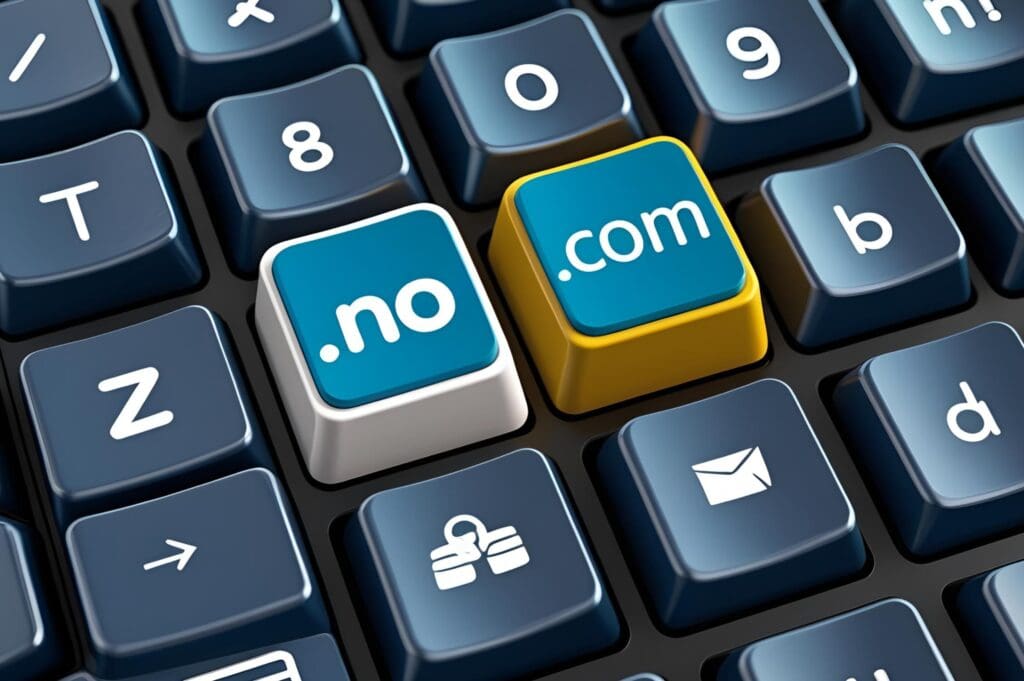
Thinking about a launch? Check these domain- and trademark pitfalls first
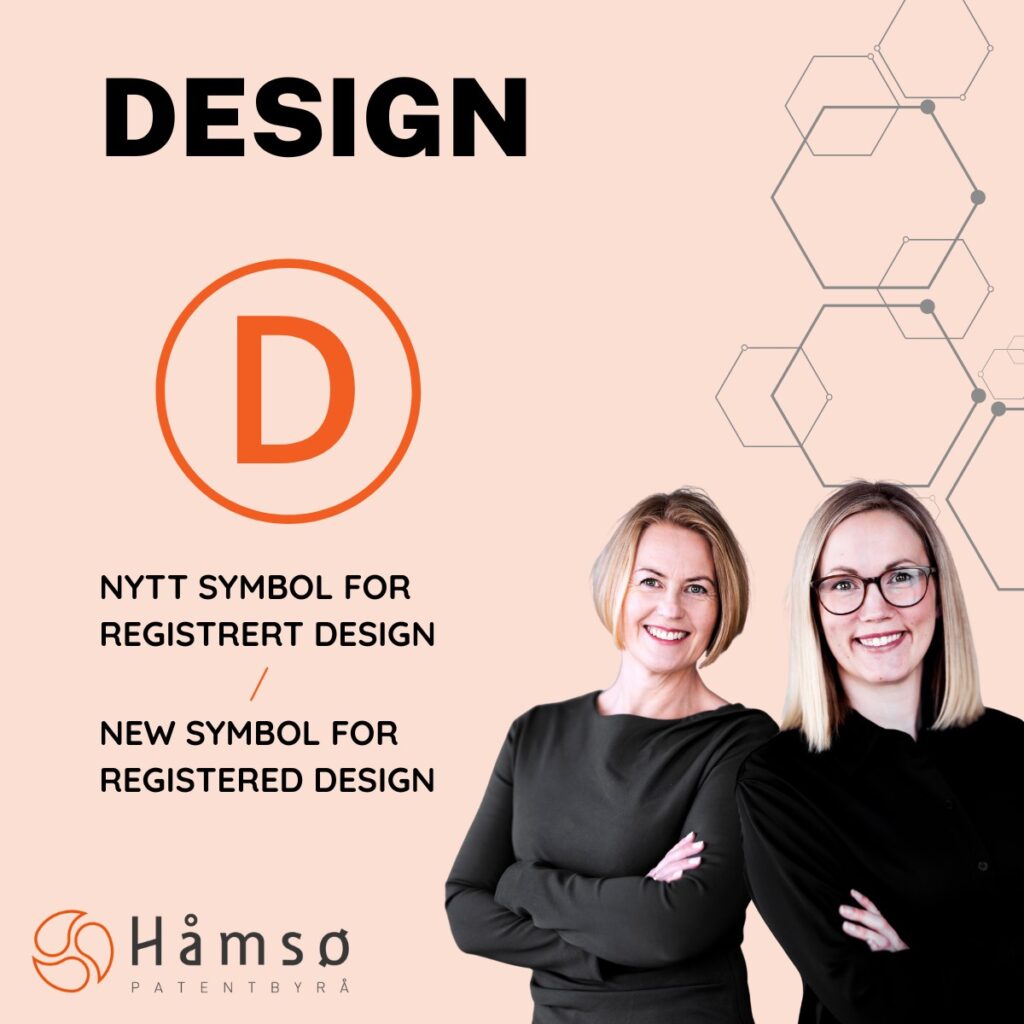
The Ⓓ symbol for registered design – what you should know.

Creating a logo that can be trademarked
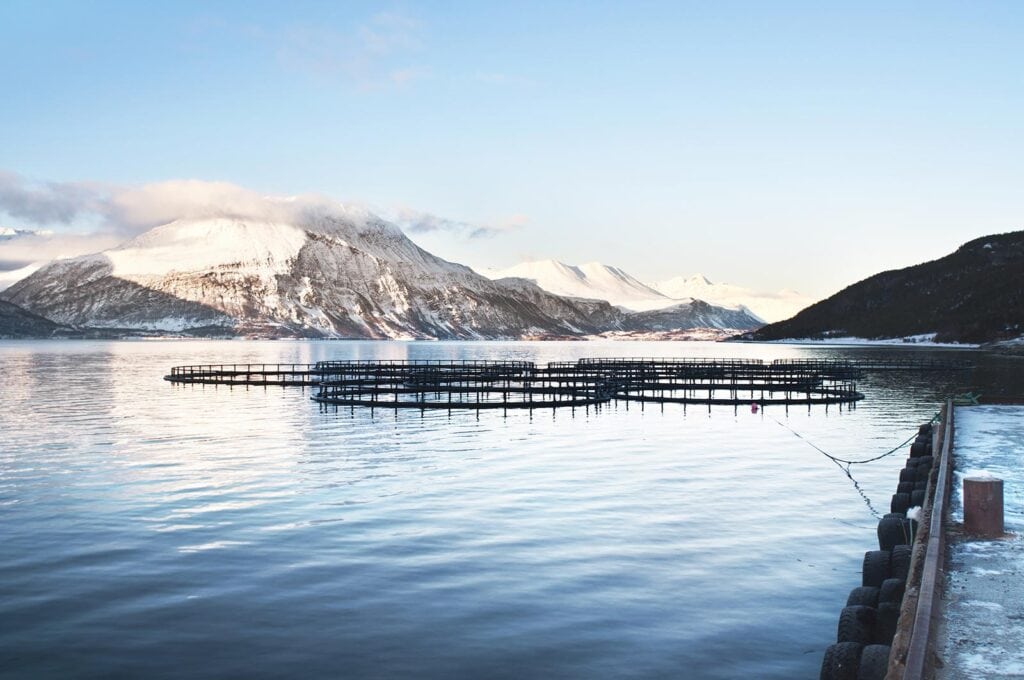
Det norske paradoks

Til utlandet via PCT
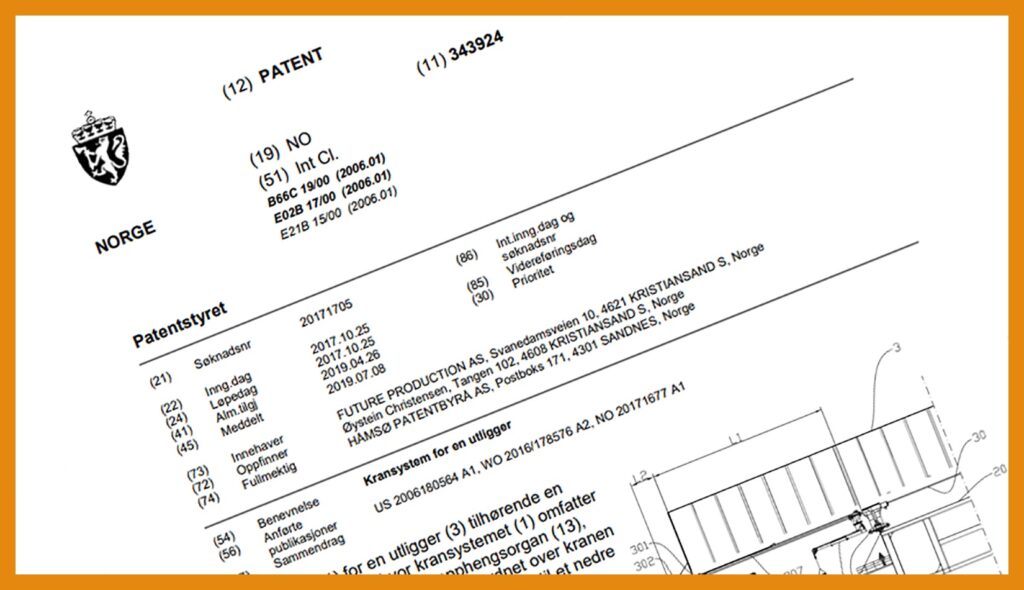
Hold patentsøknaden hemmelig etter innlevering!
News
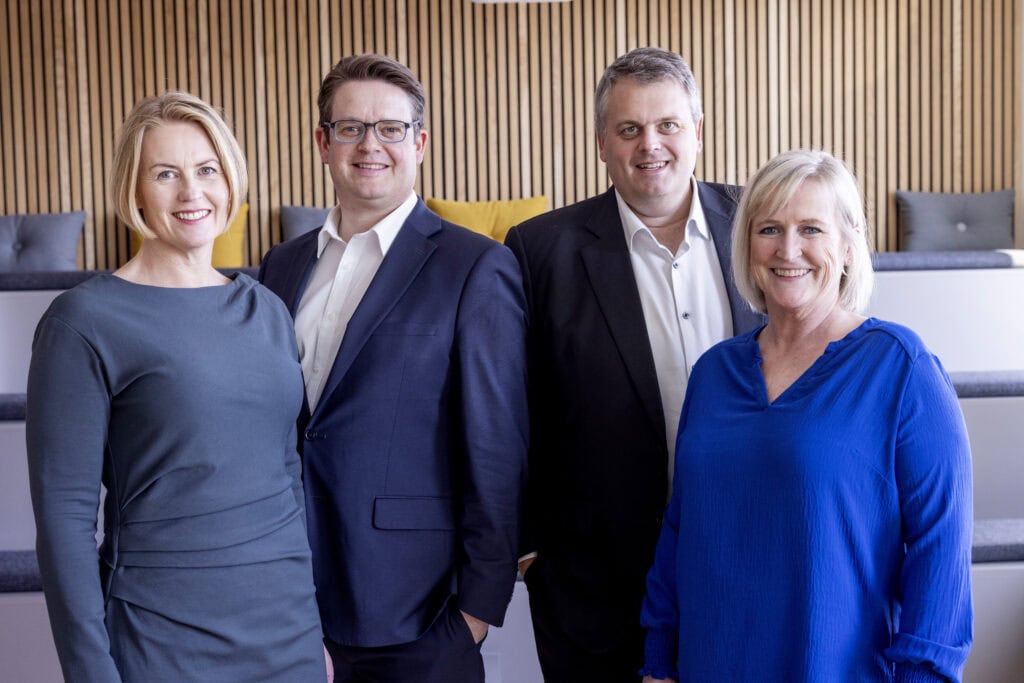
Financial Times: Håmsø Patentbyrå Among Europe’s Top Firms – for the Sixth Consecutive Year
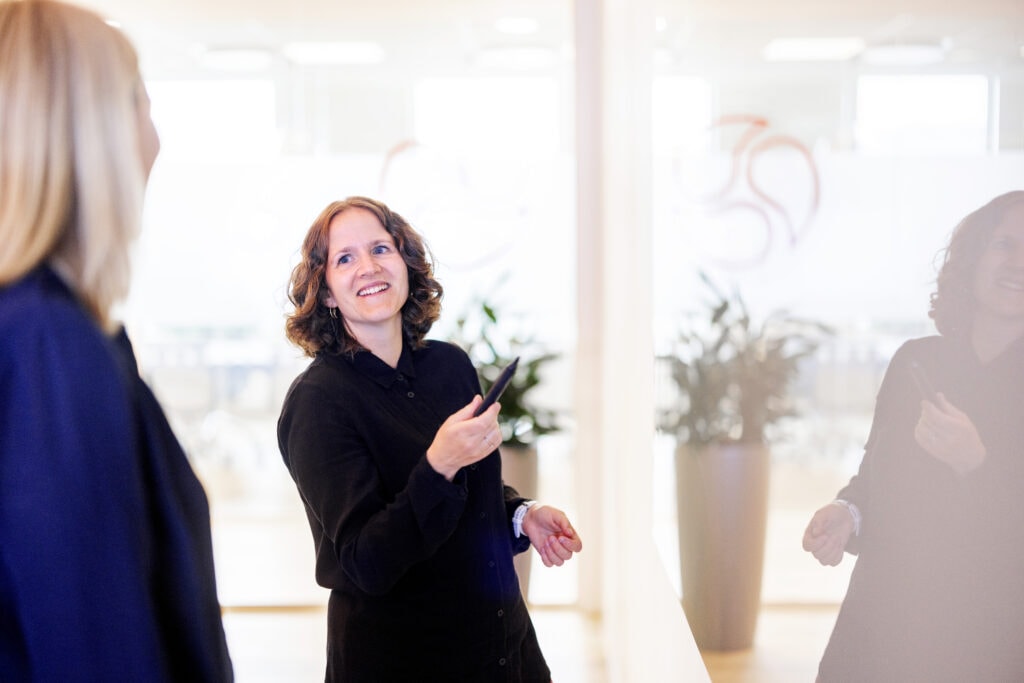
From Lab to Law – Astri’s Journey into the Patent Profession
